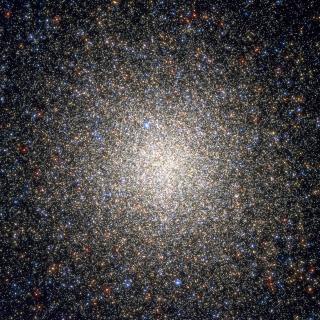Bibcode
del Pino, A.; Aparicio, A.; Hidalgo, S. L.
Referencia bibliográfica
Monthly Notices of the Royal Astronomical Society, Volume 454, Issue 4, p.3996-4012
Fecha de publicación:
12
2015
Número de citas
38
Número de citas referidas
34
Descripción
We present a comprehensive and detailed study of the stellar populations
of the Fornax dwarf spheroidal galaxy. We analyse their spatial
distributions along the main body of the galaxy, obtaining their surface
density maps, together with their radial density profiles. Results are
based on the largest and most complete catalogue of stars in Fornax,
with more than 3.5 × 105 stars covering the main body
of the galaxy up to V ˜ 24. We find a differentiated structure in
Fornax depending on the stellar ages. Old stars (≳10 Gyr) follow an
elliptical distribution well fitted by King profiles with relatively
large core radius (rc = 760 ± 60 pc). On another hand,
young populations (≲3 Gyr) concentrate in the central region of the
galaxy (rc = 210 ± 10 pc), and are better fitted by
Sérsic profiles with 0.8 < n < 1.2, indicating some discy
shape. These stars show strong asymmetries and substructures not aligned
with the main optical axes of Fornax. This together with the observed
differences between metallicity and age distribution maps strongly
suggests accretion of material with different angular momentum. These
results lead us to propose a scenario in which Fornax has suffered a
major merger at z ˜ 1.
Proyectos relacionados

Vía Láctea y galaxias cercanas
El objetivo general del Proyecto es el estudio de la estructura, historia evolutiva y proceso de formación de galaxias a través de sus poblaciones estelares resueltas, tanto a partir de fotometría como espectroscopia. El proyecto puede dividirse en cuatro líneas principales: I. Historia de formación estelar en el Grupo Local. El objetivo de esta
Martín
López Corredoira